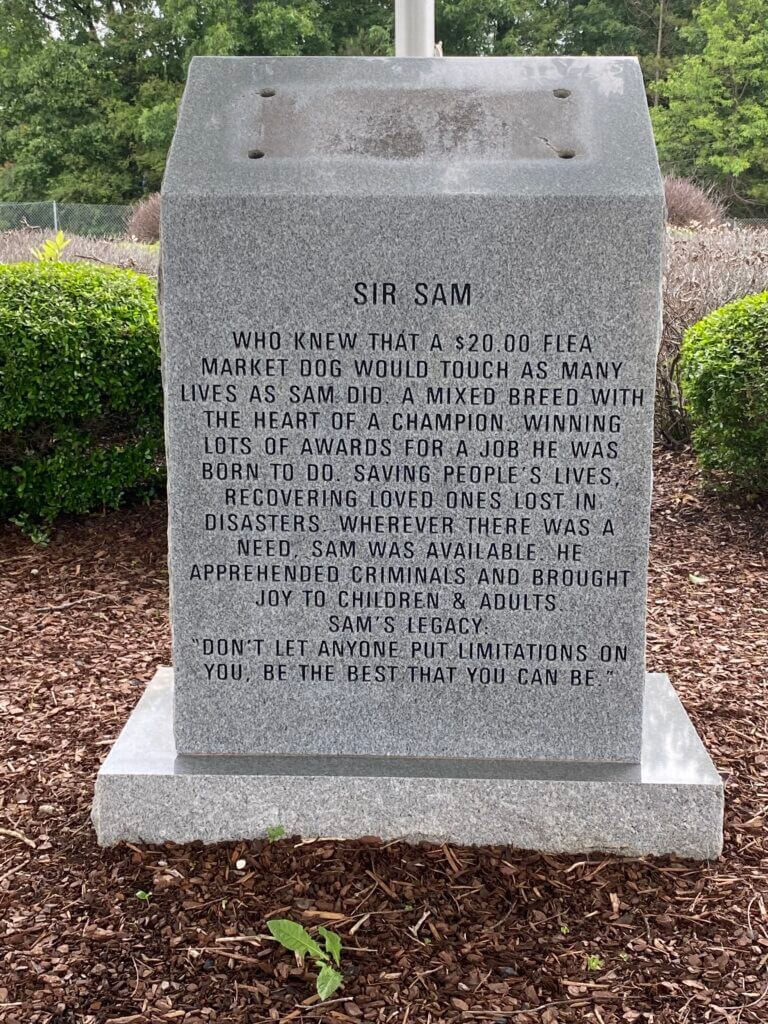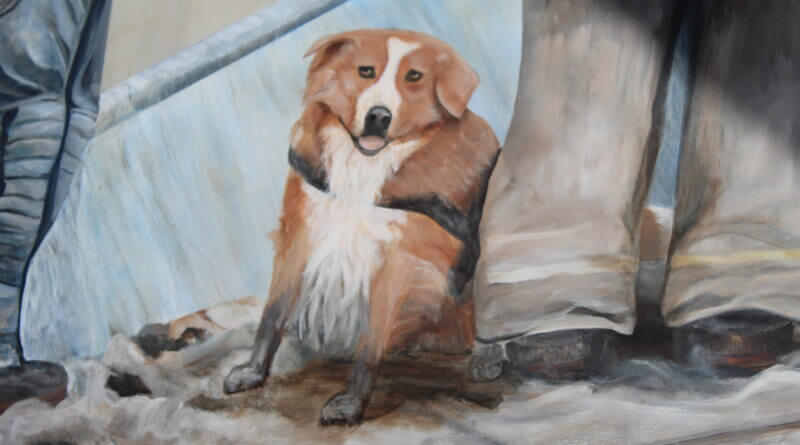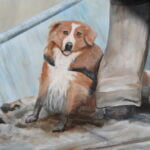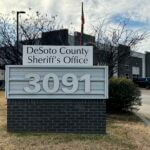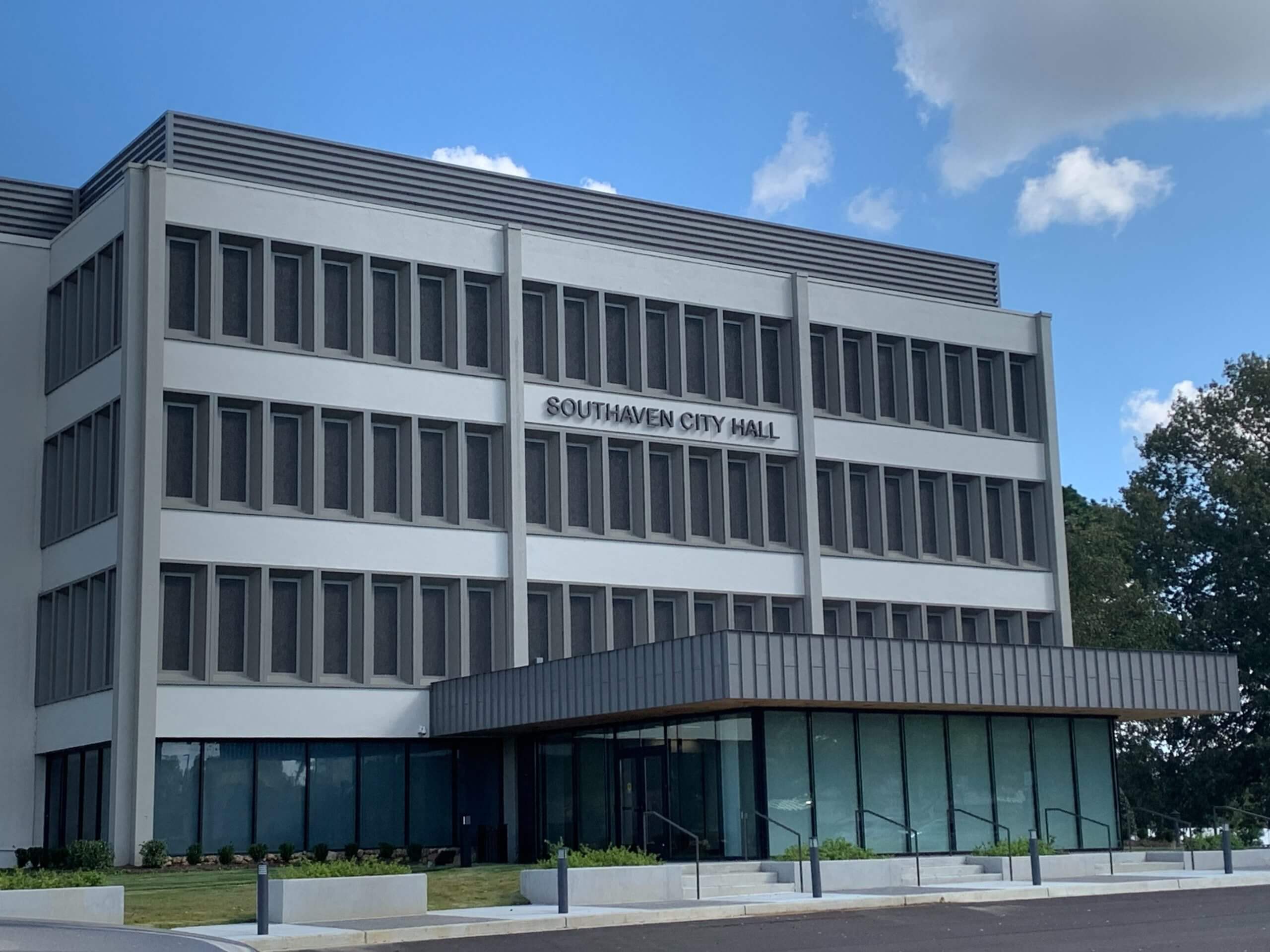Southaven canine who aided search and rescue after 9/11
Photo: Sam the dog, as depicted on the mural at the front of Southaven Fire Station #4 on Getwell Road. (Bob Bakken/desotocountynews.com)
Note: In honor of the anniversary of the terrorist attacks on the Twin Towers in New York City and the planes the crashed into the Pentagon and in Pennsylvania on Sept. 11, 2001, we are reprinting a story we ran in 2023 about the dog from Southaven that became active in search and rescue following the tragedy. Sam the Dog, aka Sir Sam, and owner Richard Clark, immediately left for New York City to help in the search and rescue of victims. An image at the front of Southaven Fire Station #4 on Getwell Road with Sam and a monument at the Southaven Animal Shelter on Pepper Chase Drive both recognize the work Clark and Sam did in the aftermath of the the tragedy. The original story is found HERE and is reprinted below.
There is a mural at the entrance to Southaven Fire Station #4 on Getwell Road that reflects a moment in time. It is a mural depicting firefighters raising a United States flag on the tragic morning of Sept. 11, 2001, a date we all refer to as 9/11. Included on the mural is a dog, a border collie chow mix, respectfully watching the moment. You can view the mural through the window at the front of the fire station.
At the Southaven Animal Shelter, 5813 Pepper Chase Drive, there is a monument and description of a dog named Sir Sam, whose life was about searching for and saving peoples’ lives.
Few people know there is a connection between the mural and the monument. Fewer people may even know that the dog shown on the mural actually lived and was actually working at the site of the World Trade Center towers following that fateful day.
The dog’s name was Sir Sam, or commonly just called Sam, and his life is recognized on the monument at the Animal Shelter. Sam is also the canine you see on the fire station mural.
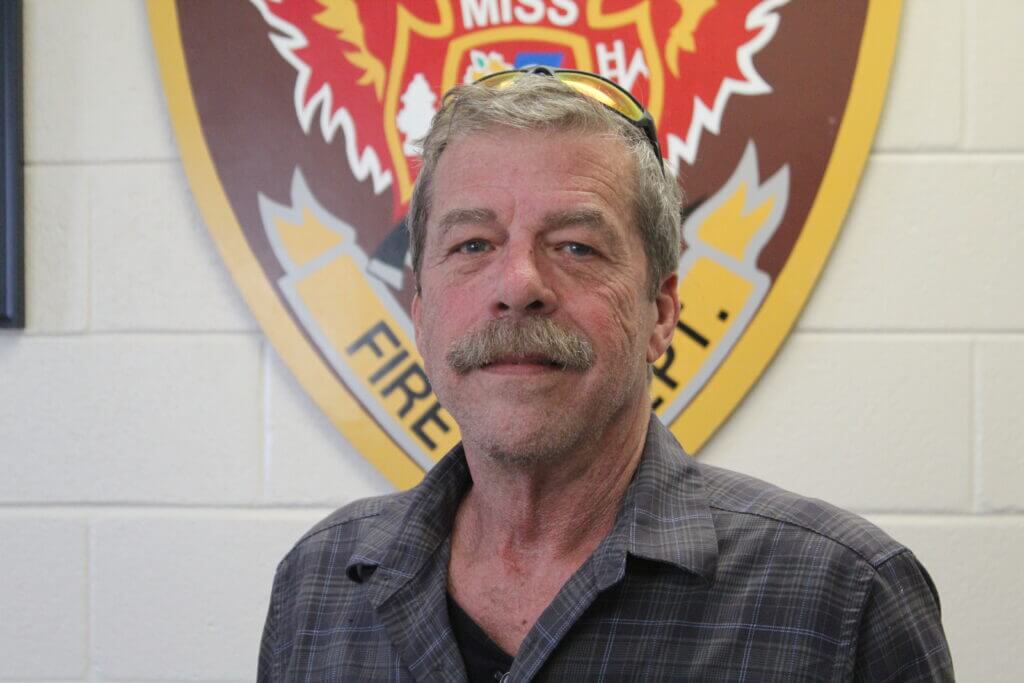
Richard Clark was Sam’s owner and partner in search and rescue. During Sam’s life, the pair traveled more than a million miles working, recovering, and finding people. Clark first met Sam in 1994.
“Sam is a 20 dollar flea market dog,” Clark said about the dog. “I broke my neck in 1994 and he was my rehabilitation. Through my habilitation, I had to figure out what I was going to do with the rest of my life. I lost a 14-year military career when I broke my neck.”
Clark said he determined he was going to learn about training dogs, so he and Sam found West Virginia Canine College, the only college-accredited canine school in the United States.
“I was there for six months, 24/7,” Clark said. “They put the polish on the dog training business, the medical, and teaching the whole ins and outs of dogs, the theories. Training dogs is really all theories because every dog is different.”
Originally based in Redding, California as part of the sheriff’s office there, Clark and Sam were already a search-and-rescue team before they went to school in West Virginia.
A divorce led Clark and Sam to move to Southaven in 1999. Two years later, Clark opened a dog training facility on Highway 51 at Stateline Road, shortly before the attacks on the World Trade Center.
A horror played out for the world on television, the attacks hit Clark especially hard and drove him and Sam immediately into action.
“Every day in those towers, there were over 200,000 people,” Clark said. “When I saw that second plane hit the building, I was packing my stuff before they even hit the ground.”
Clark said that Sam could help in the aftermath because the dog was considered the top cadaver dog in the country. Extraordinary in his ability to sniff out DNA, Sam could use that skill to help find bodies buried in the rubble.
Sam and his owner took off for New York City, and taking off was completely descriptive of the speed Clark used to get there.
“I got on I-40 at 110 miles an hour and the first officer that pulled me over, I gave them my (sheriff’s department) card from California,” Clark said. “He got on the phone and then we went through the whole state of Tennessee at 110 miles an hour. When one cop reached his limit, another cop was there waiting.”
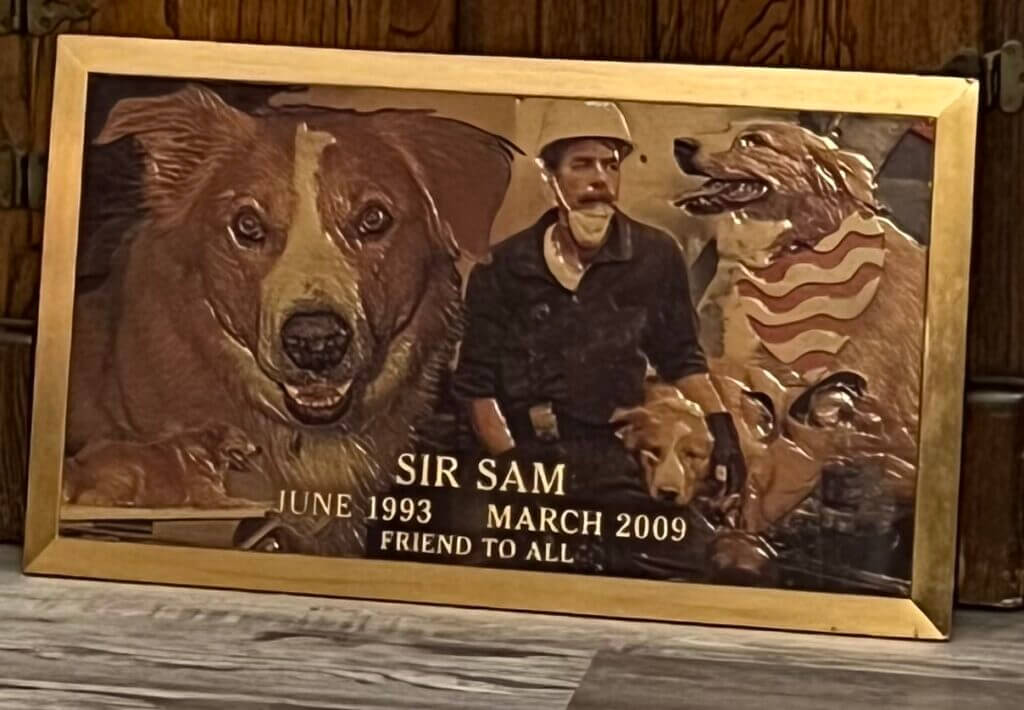
Clark said he and Sam arrived at Ground Zero at 8 a.m. the next morning.
“I checked in at the command post, showed them my ID and they said, ‘work’s over there,’” Clark said.
Sam proceeded to work in discovery for over two days. At one point, Clark and Sam were asked to appear on “The Early Show” television program with Bryant Gumbel because they had traveled from Mississippi to assist in the aftermath. They later met a young girl who recognized them from the television show who asked if Sam could help find her missing father. Clark said the moment made 9/11 become more somber and more personal.
“I was there for another 30 hours and I had to go,” Clark said. “I am looking for this little girl’s dad. It’s not just about the little girl’s dad, it’s about the whole picture.”
Clark’s daughter Alena added the time at Ground Zero also had an effect on Sam, who moved away from cadaver discovery after that.
“It was a depressing situation, even for Sam,” said Alena. “God knows what was in the air and all he smelled, so Dad had to retire him when he came back from 9/11,” although Clark added Sam did work again after Hurricane Katrina, “to get 9/11 out of my head, but that didn’t work out too well, either,” Clark said.
Sam passed away in 2009. Clark said that while alive the dog won a St. Jude Showcase of Dogs competition five years straight in the Super Dog category and an America’s Cup event in 2003. Most events, though, he couldn’t win just because he wasn’t a purebred.
It was former Southaven mayor Greg Davis who learned about Sam and what he did at Ground Zero, which led to the headstone being made. Clark has traveled across the nation with the plaque of Sam in recent years, telling Sam’s story and what he did that tragic day in 2001. Now facing a terminal illness, Clark has returned to Southaven with the plaque, just to put a final chapter on Sam’s legacy and what he did.
“I taught over 5,000 dogs over 25 years,” Clark said. “Sam had over 50 children and about 85 percent of them are working dogs. Seizures, diabetes, ovarian cancer research, search and rescue and doing really well.”
